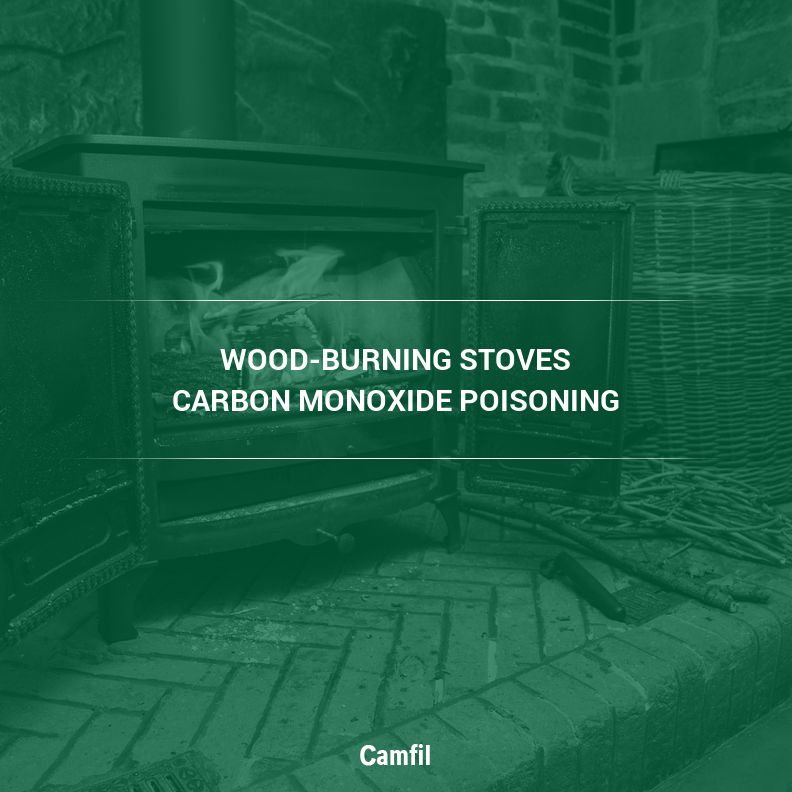Learn whether filters such as HEPAs, high efficiency and molecular filters are capable of capturing and removing particulate and vapors from the smoke of wood-burning stoves and furnaces.
high efficiency or molecular air filters, they could be putting their health and safety at risk.
Wood-burning stoves continue to be popular even in an era of sophisticated heating, ventilation, and air-conditioning (HVAC) systems. They’re inexpensive, easy to maintain, though some would say difficult to clean, and they’re able to reduce heating bills by as much as 30 percent.
And then there’s the obvious appeal of a fireplace, which becomes the centerpiece of many living rooms in the winter months. It’s hard to deny the nostalgia and romance that comes with lighting a fire on a cold night and sitting near the fire for some quality time, with the mood punctuated by the occasional cracking of firewood. It’s no small wonder why fireplaces can add to the value of a home.
But wood burning also introduces a wide range of indoor air pollutants that reduce indoor air quality and trigger severe allergy symptoms. This reaction is especially true when indoor air is unable to vent properly.
“Burning of gas heaters produces NO2 and CO which must be vented to the outdoors. Space heaters emit particles, CO, NO2, and sometimes SO2,” says Mark Davidson, Manager of Marketing & Technical Materials at Camfil USA. “In reality, gas wood and coal stoves all emit particles as well as gases.”
Emissions from Wood Stoves that Reduce Indoor Quality
Anyone who has ever smelled smoke coughed after inhaling it or seen darkened surfaces near a smoke source understands there are both particles and gases involved.
But what exactly is smoke?
The answer depends on what is burning at the time. We know that smoke is made up primarily of gases and particles, mostly water and carbon—a major component of soot. If the smoke comes from the process of burning wood, the particles can be made up of organic compounds and chemicals such as:
- Formaldehyde
- Acrolein
- Propionaldehyde
- Benzene
- Butyraldehyde
- Acetaldehyde
- Furfural
According to the United States Environmental Protection Agency (EPA), the key to reducing the presence of these chemicals in the air is to burn the wood efficiently by using an EPA-certified wood stove and dry, seasoned wood.
A Warning on the Danger of Carbon Monoxide Poisoning
Every winter there are tragic stories in the news due to carbon monoxide poisoning from faulty furnaces, portable space heaters or automobile exhaust entering enclosed spaces. All facilities including homes, retail spaces, and commercial office buildings that rely on the combustion of fuel as a heating source or for power generation as well as any that have indoor garages or any other type of equipment that generates carbon monoxide, must ensure the facilities are inspected and up to local building codes. While molecular filters do exist that capture this dangerous gas, no one should ignore building and equipment inspections that ensure proper ventilation procedures have been followed. A filter is NOT the primary defense against these carbon monoxide tragedies.
What Will Help Against Smoke from Wood-burning Stoves and Fireplaces?
Smoke from inefficient combustion can be especially dangerous to at-risk segments of the population like pregnant women, children, infants and the elderly. When inhaled, the chemical compounds in wood smoke can cause lung cancer and trigger allergic reactions such as sneezing, coughing, wheezing, sinus irritation, runny nose and headaches. Smoke can be especially dangerous to people suffering from asthma.
There are two main issues associated with fireplace smoke.
First, there is the particulate matter (PM) in the smoke itself. Second, there are the chemicals released in the actual process of burning wood.
For particulate matter, Camfil high-efficiency particulate air (HEPA) filters are designed to remove the smallest particles down to .3 micron in size. Other air filters, while not as efficient as HEPA filters, are considered to be high efficiency and can capture up to 90% of particles 1 micron and above.
Molecular filters are an effective way to help control the gases and vapors found in smoke. Molecules that make up the VOCs are up to 10,000 times smaller than the particles that are captured by HEPA and other high efficiency filters, so they are able to pass right through the filters. However, molecular filters are produced from media with millions of sub-micron sized cave-like structures that are able to trap molecules deep in these miniature caves and hold them in place. Molecular filtration media has an enormous surface are relative to its size. While difficult to believe, a single gram of molecular media could have surface area, if laid flat, up to 1,000 square meters.
When HEPA or high efficiency air filters are paired with a molecular filter, this creates a filtration system that doesn’t just capture and remove PM (particulate matter) but also removes chemicals in smoke.
Additional Ways to Minimize Wood-Burning Stove Pollution
Aside from installing HEPA, high efficiency air filters or molecular filters to help control the VOCs from fireplace smoke, homeowners can turn to a wide range of measures to limit their exposure to wood-burning stove pollution, such as:
- Ensuring the fireplace is well-constructed and inspected regularly
- Installing well-sealed doors in front of the fireplace to contain smoke emissions
- Burning only natural wood—never trash or treated wood
- Using only dry wood
- Using smaller pieces of wood instead of larger pieces to limit inefficient combustion
If you are interested in learning more about protecting your indoor quality with commercial air filters from Camfil USA, please click here.
Media Contact:
Lynne Laake
Camfil USA Air Filters
T: 888.599.6620
E:Lynne.Laake@camfil.com
F: Friend Camfil USA on Facebook
T: Follow Camfil USA on Twitter
Y: Watch Camfil Videos on YouTube
The post The Health Risks of Using Wood-Burning Stoves appeared first on Air Filters for Clean Air.

